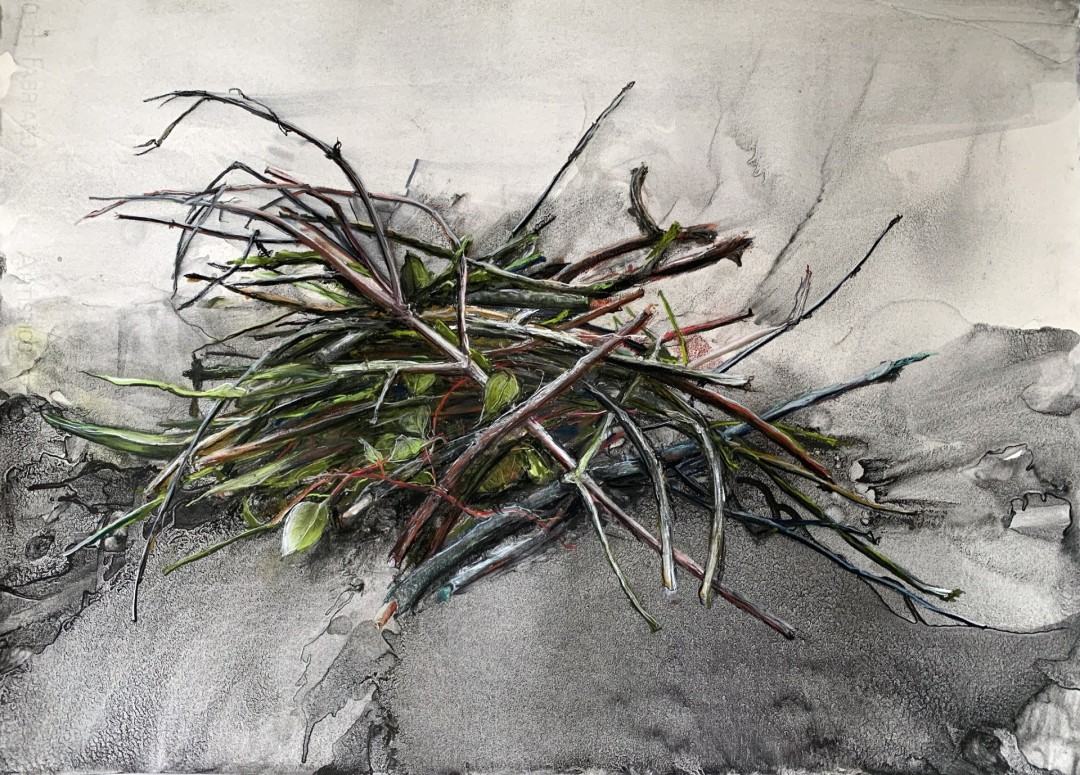Bio
Louise Kames holds a Master of Fine Arts degree in drawing and printmaking from the University of Wisconsin-Madison, a Master of Arts degree in Art History from the University of Illinois and a Bachelor of Arts degree in studio art and art history from Clarke University. She is a professor of art at Clarke University in Dubuque Iowa, where she serves as Director of the Art + Design Program. Kames is a past recipient of Clarke University’s Meneve Dunham Award for Excellence in Teaching.
Her drawings, print, and installation-based work are exhibited widely including solo exhibitions across Iowa and the Midwest region. She is a regular participant in regional, national, and international juried exhibitions. Kames enjoys the creative and cultural exchange offered at artist residencies. She has worked at numerous international and national residencies, including Schloss Plüschow, Mecklenburg, Germany: Frans Masereel Centrum, Kasterlee, Belgium; The Tyrone Guthrie Centre, County Monaghan, Ireland; Banff Centre for the Arts, Alberta, Canada; Ragdale Foundation, Lake Forest, IL; Oberpfälzer Künstlerhaus in Schwandorf, Germany; Virginia Center for the Creative Arts, Sweet Briar, VA; and Vermont Studio Center, Johnson, VT.
Recent solo exhibitions include I Don’t See Anything That’s Not Beautiful at Clarke University, Seeing Deeply, at University of Iowa Hospitals and Clinics, and Dear Mother at the Dubuque Museum of Art.
The fabric installation, I Don’t See Anything That’s Not Beautiful, received the Purchase Award at DuMA’s 2021 Biennial exhibition. She was part of the curatorial team for the Museum’s, Just to Live Is Holy: Women Religious and a Tradition of Art, Faith and Justice exhibition in 2018. The Figge Museum of Art, Davenport, IA, will host an exhibition of Kames’s artwork in 2024.
Contact
Artist Statement
“Slow down your seeing.” This is a directive I often give to students in my drawing classes, as well as a practice I endeavor to follow myself. It opens the door to seeing and feeling the sensitive and often ephemeral relationships between forms.
Whether in drawings, prints or installations, my work follows a history of slowed seeing. Fallen branches, uprooted garden vegetables and scattered organic matter are claimed from roadside walks and taken to the studio to become still life subjects. I draw from direct observation, calling in the limits of my senses. It’s a meditative practice that recalls the rigor of a religious practitioner. Organic forms sometimes wilt while I engage them, as my observation charts their minute changes in structure, yielding forms striking and yet subtle.
I find pleasure and solace in the simple act of seeing and wish to share this experience with others through my work. My hope is to draw the viewer into a similar contemplative space.
